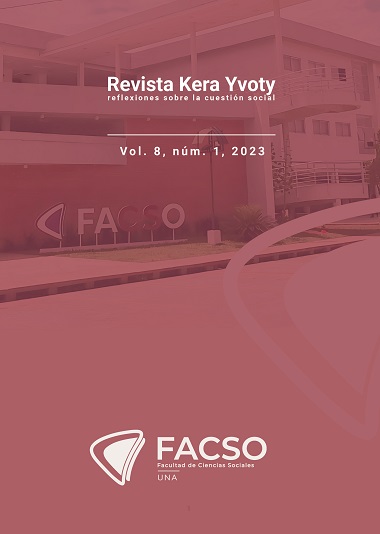Abstract
Through in-depth interviews, the experience of two women and mothers with a child in a situation of consumption is related. Using the dialogic method, the mechanisms that these people have used to face this situation in their lives are identified. The document has received feedback from both women throughout the process, especially in the conclusions. Describe the experience of women with a child in a situation of substance use, identifying coping mechanisms. This study is qualitative, based on the life stories of two women; mothers, over 45 years old, heads of household, state officials and living in the Capital. In the analysis carried out from the reports of each of the participants, it is possible to identify very similar characteristics related to the variables: family situation, work, and the mother-child relationship. Likewise, even opposite aspects were found, especially in relation to individual characteristics and life projection. Rather than feeling of justification and concealment of the behaviors related to the use of drugs of the children, the common feeling is of loss of control as well as denial of responsibility with the addicted child, for being of legal age. The main resource used by both women, especially in the most critical moments, is spiritual belief, supplication and prayer. Another important resource is the workplace, which becomes the main space for oxygenation and containment, a resource to regain energy and return home. Silence and withdrawal is closely associated with a total disbelief in the institutions and the few services offered by the state.
References
Brooks, P. (1984). Reading for the plot: Design and intention in narrative. Random House.
Maturana Romesín, H., Varela G., Varela., E. A. ( 2003 ). El árbol del conocimiento. Las bases ideológicas del entendimiento humano. Lumen Editorial Universitaria.
Molina Fernández, A. J. (2013). Personas, emociones y adicciones: Más allá del cerebro. Revista Adicción y Ciencia, 3(1). https://www.adiccionyciencia.info/
Rojas, M. A. (2003). Aportes sobre la familia del farmacodependiente. Ciencias Sociales, 99, 25-44.
Secretaría Nacional Antidrogas. Observatorio Paraguayo de Drogas. (2004). Estudio Nacional de Consumo de Drogas en Hogares Paraguayos. SENAD.
Taylor, S. B., y Bogan, R. (1992). Introducción a los métodos cualitativos en investigaciónn. La búsqueda de los significados. Paidós.
Valladolid, M. N. (2015). Innovación conceptual en adicciones. (Primera parte). Rev Neuropsiquiatr, 78(1).
Valladolid, M. N. (2015). Innovación conceptual en adicciones. (Segunda parte). Rev Neuropsiquiatr, 78(2).
White, M., y Epston, D. (2002). Medios narrativos para fines terapéuticos. Ediciones Paidós.

This work is licensed under a Creative Commons Attribution 4.0 International License.
Copyright (c) 2023 Evelyn Cattebeke Laconich




